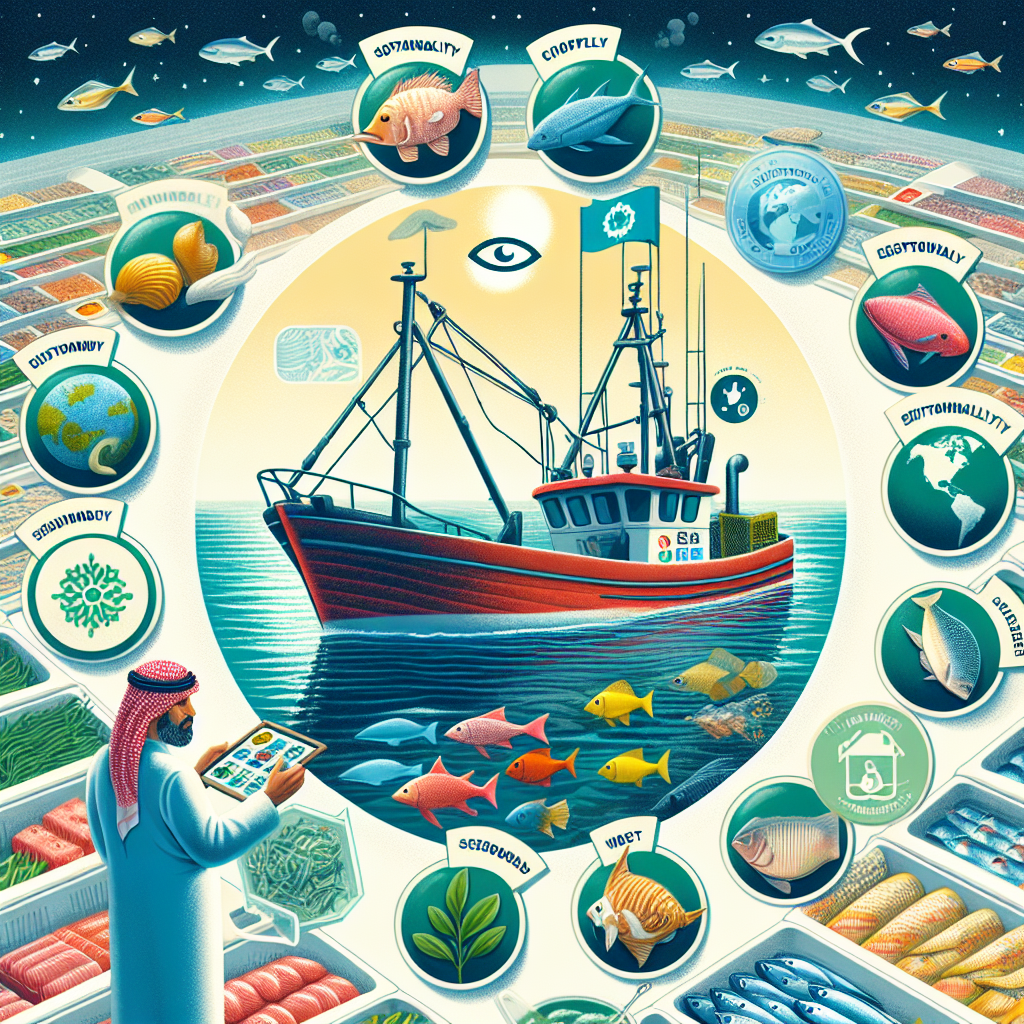[ad_1]
### Sustainable Seafood: Understanding Certifications and Choosing Wisely
The ocean’s bounty has catered to the global appetite with a wide variety of seafood, feeding billions and supporting countless communities. However, this demand has resulted in overfishing, habitat destruction, and a host of other environmental issues. Recognizing the urgent need for change, consumers, producers, and environmental organizations are turning towards sustainable seafood as a solution. This article dives into the world of sustainable seafood, focusing on understanding certifications and making informed choices.
#### The Importance of Sustainable Seafood
Sustainable seafood is caught or farmed in a manner that ensures the long-term health and stability of that particular marine environment. It takes into account the life cycles and feeding habits of fish and shellfish and the ecosystems on which they depend, aiming to leave minimal impact on the marine environment and other marine organisms.
#### Certifications to Know
Multiple organizations around the globe offer certifications for sustainable seafood, each with its own set of criteria and assessment processes. The most recognized among these include:
– **Marine Stewardship Council (MSC):** Focused on wild-caught fish, MSC certification is based on the sustainability of the fish stock, minimal environmental impact, and effective management. It’s one of the most rigorous and trusted certifications, with the blue MSC eco-label easily found on products worldwide.
– **Aquaculture Stewardship Council (ASC):** The ASC focuses on responsibly farmed seafood. Criteria include preserving water quality, promoting health and welfare of farmed species, and ensuring social responsibility towards workers and local communities. Products bearing the ASC label meet high standards of environmental sustainability and social responsibility.
– **Friend of the Sea (FOS):** This certification applies to both wild and farmed seafood. FOS criteria include minimizing environmental impacts, ensuring a sustainable population, and reducing bycatch and impact on the seabed.
These certifications offer a guiding light for consumers, but understanding their criteria and recognizing their logos on products can help make more informed choices.
#### Why Certifications Matter
Certifications are not just logos on a package; they are a sign of a commitment to sustainability. They indicate that the seafood product has been produced or caught according to stringent environmental and ethical standards. For consumers, these certifications simplify the often complex decision-making process involved in buying seafood, enabling them to choose products that contribute to healthier oceans.
#### Choosing Wisely
Here are several tips on choosing sustainable seafood, either at a grocery store or a restaurant:
1. **Look for Labels:** Keep an eye out for MSC, ASC, and FOS labels. These give a good indication that the seafood has been sourced following rigorous sustainability standards.
2. **Ask Questions:** Don’t hesitate to ask your fishmonger or restaurant about the origin of their seafood, whether it’s farmed or wild-caught, and if they know about its sustainability status.
3. **Educate Yourself:** Resources like Seafood Watch from the Monterey Bay Aquarium provide extensive guides on the sustainability of seafood species, helping consumers make informed choices based on the most updated data.
4. **Prefer Local and Seasonal:** Seafood that’s caught or farmed locally and in season tends to have a smaller carbon footprint. It’s also a great way to support local communities.
5. **Consider Lesser-Known Species:** Opting for underutilized species helps reduce pressure on popular, often overfished species. Plus, you might discover a new favorite!
#### The Challenges Ahead
While sustainable seafood is gaining traction, challenges remain, including the lack of universal standards, the complexity of marine ecosystems, and the need for more comprehensive consumer education. However, the increasing availability of certified sustainable seafood and the growing consumer interest are positive signs that we are on the right path.
#### FAQs about Sustainable Seafood
**Q: Is sustainable seafood more expensive?**
A: It can be, due to the rigorous standards and practices it requires. However, prices are becoming more competitive as demand increases and more sustainable practices are adopted.
**Q: Can farmed seafood really be sustainable?**
A: Yes, when done correctly. Sustainable aquaculture practices minimize environmental impact, support the health and welfare of farmed species, and ensure social responsibility.
**Q: How can I be sure the seafood I buy is truly sustainable?**
A: Look for recognised certification labels like MSC, ASC, and FOS. These ensure that the seafood has met specific sustainability criteria.
**Q: Are there any apps or guides for choosing sustainable seafood?**
A: Yes, there are several resources available, including the Seafood Watch app by the Monterey Bay Aquarium, which provides recommendations for sustainable seafood choices.
**Q: How can I support sustainable seafood beyond buying certified products?**
A: Educate others about the importance of sustainable seafood, support policies and practices that protect ocean health, and consider the environmental impact of your overall diet.
### Conclusion
Sustainable seafood represents a commitment to the health of our oceans and future generations. Understanding and recognizing certifications can empower consumers to make choices that support this commitment. By choosing wisely, asking questions, and staying informed, each of us can play a part in ensuring the sustainability of our marine resources.
[ad_2]

Leave a Reply